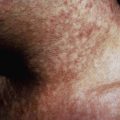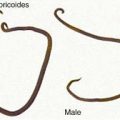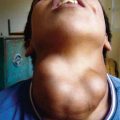Chapter 353 Mitochondrial Hepatopathies
Hepatocytes are rich in mitochondria due to the energy required for the process of metabolism and are a target organ for disorders in mitochondrial function. Defects in mitochondrial function can lead to impaired oxidative phosphorylation (OXPHOS), increased generation of reactive oxygen species, impairment of other metabolic pathways, and activation of mechanisms of cellular death. Mitochondrial disorders can be divided into primary, in which the mitochondrial defect is the primary cause of the disorder, and secondary, in which mitochondrial function is affected by exogenous injury or a genetic mutation in a nonmitochondrial gene (Chapter 81.4). Primary mitochondrial disorders can be caused by mutations affecting mitochondrial DNA (mtDNA) or by nuclear genes that encode mitochondrial proteins or cofactors (Table 353-1). Secondary mitochondrial disorders include diseases with an uncertain etiology such as Reye syndrome; disorders caused by endogenous or exogenous toxins, drugs, or metals; and other conditions in which mitochondrial oxidative injury may be involved in the pathogenesis of liver injury.
Table 353-1 PRIMARY MITOCHONDRIAL HEPATOPATHIES
DGUOK, deoxyguanosine kinase; MPV17; POLG, polymerase γ; CoA, coenzyme A; mtDNA, mitochondrial DNA; NADH, nicotinamide adenine dinucleotide.
Adapted from Lee WS, Sokol RJ: Mitochondrial hepatopathies: advances in genetics and pathogenesis, Hepatology 45:1555–1565, 2007.
Epidemiology
Expression of mitochondrial disorders is complex and epidemiologic studies are hampered by technical difficulties collecting and processing tissue specimens needed to make accurate diagnoses, the variability in clinical presentation, and the fact that most disorders display maternal inheritance with variable penetrance (Chapter 75). mtDNA mutates 10 times more frequently than nuclear DNA secondary to a lack of introns, protective histones, and an effective repair system in mitochondria. Mitochondrial genetics also display a threshold effect in that the type and severity of mutation required for clinical expression varies among people and organ systems. Despite this, it has been estimated that mitochondrial diseases have a prevalence of 11.5 cases per 100,000 populations. Treatments for mitochondrial hepatopathies are supportive. The role of liver transplantation is controversial given the multisystemic involvement.
Primary Mitochondrial Hepatopathies
A common presentation of respiratory chain defects is severe liver failure in the 1st few months of life, characterized by lactic acidosis, jaundice, hypoglycemia, renal dysfunction, and hyperammonemia. Symptoms are nonspecific and include lethargy and vomiting. Most patients additionally have neurologic involvement manifested as a weak suck, recurrent apnea, or myoclonic epilepsy. Liver biopsy shows predominantly microvesicular steatosis, cholestasis, bile duct proliferation, glycogen depletion, and iron overload. With standard therapy, the prognosis is very poor, and most patients die from liver failure or infection in the 1st few months of life. Cytochrome-c oxidase (Complex IV), a nuclear encoded gene, is the most common deficiency in these infants although complex I and III have also been implicated (see Table 353-1).
Secondary Mitochondrial Hepatopathies
Secondary mitochondrial hepatopathies are caused by a hepatotoxic metal, drug, toxin, or endogenous metabolite. In the past, the most common secondary mitochondrial hepatopathy was Reye syndrome, the prevalence of which peaked in the 1970s and had a mortality rate of >40%. Even though mortality has not changed, the prevalence has decreased from >500 cases in 1980 to ∼35 cases per yr since. It is precipitated in a genetically susceptible person by the interaction of a viral infection (influenza, varicella) and salicylate use. Clinically, it is characterized by a preceding viral illness that appears to be resolving and the acute onset of vomiting and encephalopathy (Table 353-2). Neurologic symptoms can rapidly progress to seizures, coma, and death. Liver dysfunction is invariably present when vomiting develops, with coagulopathy and elevated serum levels of AST, ALT, and ammonia. Importantly, patients remain anicteric and serum bilirubin levels are normal. Liver biopsies show microvesicular steatosis without evidence of liver inflammation or necrosis. Death is usually secondary to increased intracranial pressures and herniation. Patients who survive have full recovery of liver function but should be carefully screened for fatty-acid oxidation and fatty-acid transport defects (Table 353-3).
Belay E, Bresee JS, Holman RC, et al. Reye’s syndrome in the United States from 1981 through 1997. N Engl J Med. 1999;340:1377-1382.
Bougneres PF, Rocchiccioli F, Koluraa S, et al. Medium-chain acyl-CoA dehydrogenase deficiency in two siblings with a Reye-like syndrome. J Pediatr. 1985;106:918-921.
Casteels-Van Daele M, Van Geet C, Wounter C, et al. Reyes syndrome revisited: A descriptive term covering a group of heterogeneous disorders. Eur J Pediatr. 2000;159:641-648.
Ducluzeau PH, Lachaux A, Bouvier R, et al. Progressive reversion of clinical and molecular phenotype in a child with liver mitochondrial DNA depletion. J Hepatol. 2002;36:698-703.
Holve S, Hu D, Shub M, et al. Liver disease in Navajo neuropathy. J Pediatr. 1999;135:482-493.
Karadimus CL, Vu TH, Holve SA, et al. Navajo neurohepatopathy is caused by a mutation in the MPV17 gene. Am J Hum Genetics. 2006;79:544-548.
Lee WS, Sokol RJ. Mitochondrial hepatopathies: advances in genetics and pathogenesis. Hepatology. 2007;45:1555-1565.
Mancuso M, Filosto M, Tsujino S, et al. Muscle glycogenosis and mitochondrial hepatopathy in an infant with mutations in both the myophosphorylase and deoxyguanosine kinase genes. Arch Neurol. 2003;60:1445-1447.
McFarland R, Hudson G, Taylor RW, et al. Reversible valproate hepatotoxicity due to mutations in mitochondrial DNA polymerase γ (POLG1). Arch Dis Child. 2008;93:151-153.
Nguyen RK, Sharief FS, Chan SSL, et al. Molecular diagnosis of Alpers syndrome. J Hepatol. 2006;45:108-116.
Spinazzola A, Santer R, Akman OH, Tsiakas K, et al. Hepatocerebral form of mitochondrial DNA depletion syndrome. Arch Neurol. 2008;65(8):1108-1113.
Teitelbaum JE, Berde CB, Nurko C, et al. Diagnosis and management of MNGIE syndrome in children: Case report and review of the literature. J Pediatr Gastroenterol Nutr. 2002;35:377-383.






